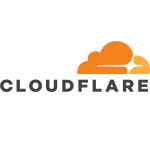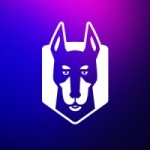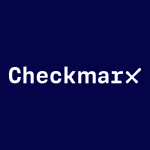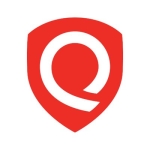What is our primary use case?
We use the solution as our cloud security platform.
We use Wiz across all of our GCP environments. We have approximately nine projects, around five thousand instances, and five thousand containers. As for AWS, it is relatively small; it consists of a few VPCs with around five hundred assets.
How has it helped my organization?
Wiz is the only security solution we use for our cloud platform. It scans data activity, potential exposures, and any efforts with overly wide permissions, especially when they involve semi-exposed ports of sensitive data. Wiz also tracks vulnerabilities, including zero-day vulnerabilities, and logs. We are taking advantage of the security graph and all its features to make it easier to track security across the board.
Wiz's ability to scan every layer of our cloud environment without any agents is why we have the ease of deployment that we can provide on the order level and view all the products, giving us a lot of value and immediate return on investment. Agents are required for certain use cases, such as blocking features or taking action immediately if something is not right, but we did not have that requirement. We created workflows to identify where the action is needed and integrated them with our ticketing system to assign appropriate urgency tickets, so the right team can work on it immediately.
Automated attack path analysis has been beneficial to us by helping us to identify what needs to be done when a vulnerability is discovered. It allows us to trace the attack paths from a potential point of exposure to the vulnerability and how it can be exploited. We can also determine how to mitigate the vulnerability, which is of great value from a remediation perspective.
Within the first two weeks of the deployment, we were able to limit all of our security issues in our production environment. We had been using another platform, but it lacked ease of use and we were not able to get all the details we needed. We replaced this solution with Wiz, and it allowed us to take action when an alert came in. We were able to drill down to the root cause and with the knowledge base that comes with it, we were able to fix issues and get rid of all our security issues. This was a huge value.
Having visibility into our risk detection with a contextual view to prioritize potentially critical risks is very important, as we do not have a large security or development team. If we were to receive twenty alerts, we would not have the capacity to address them all at once. Knowing the context of how this would impact the organization is of great value, as it allows us to tackle the most critical issues based on external exposure, exploitable areas, and the type of data behind the vulnerability. This context helps us prioritize, as all risks are not equal.
Wiz has helped us reduce blind spots in our restriction capabilities by 100 percent. We were running a tool that scanned for vulnerabilities, but we did not have an external exposure component or any context for it. We had just deployed the DSPM and were not able to look at many past levels. The tool we were using previously was just one ready assessment tool. Wiz adds a lot of value.
Additionally, since we have both e-commerce and SaaS, it is important for us to be compliant and isolated. Wiz makes this very easy as we are a hundred percent cloud-based. We can review our compliance and see all the efforts running in our cloud environment. If there are any controls that are not compliant with ISO software, we have set up learning on that and integrated it with IT and some tooling. This allows whoever needs to take action for their control to do so immediately, ensuring that we stay compliant.
I have limited resources in my department, but if I wasn't utilizing Wiz and used our old solution, I would need to acquire two to three more resources. Therefore, with Wiz, I can do all of the above with the existing resources instead of bringing on more tools and personnel.
What is most valuable?
The first thing that stood out was the ease of installation and the quick value we got out of the solution. I compared Wiz to two other products that we were sending to other clients for cloud security. We were able to get Wiz installed within a couple of hours for all of our cloud assets and we could see insights into our security posture within a couple of hours of the installation. Our DevOps team was very excited to see what they needed to work on. We addressed all the critical issues within two weeks of installing the solution.
What needs improvement?
The only thing that needs to be improved is the number of scans per day. We need to educate our auditors and ensure that scans are done more than once a day. If there is a vulnerability that is exposed, we can update it after the scan. We are currently scanning once a day, which is acceptable for UCSB. We are trying to figure out how to increase the frequency of the scans, as some universities do not wait a day before they know if something is exposed. Knowing earlier is always better.
Buyer's Guide
Wiz
September 2025
Learn what your peers think about Wiz. Get advice and tips from experienced pros sharing their opinions. Updated: September 2025.
868,787 professionals have used our research since 2012.
For how long have I used the solution?
I have been using the solution for six months.
What do I think about the stability of the solution?
We have not seen any outages with Wiz. The solution is stable.
What do I think about the scalability of the solution?
Wiz is our e-commerce platform. That means we have approximately five hundred million impressions on our website per month, with around four million users.
This solution is very scalable; if I add resources to new accounts, they are automatically monitored. When adding a new account, no additional action is required; we don't even need to consider capacity, as it is already maximized.
Which solution did I use previously and why did I switch?
Previously, we had an agent-based solution called Rapid7 which would alert us of any issues it identified. However, due to the outdated hardware, there was no context to the alerts, and we were overwhelmed. When I joined nine months ago, I noticed that the tool was being ignored and was a waste of money. Therefore, I began searching for a more effective solution that would provide context-based results without needing additional resources. We wanted something that would address real issues and provide five actionable alerts a day, with maximum outbound action taken if necessary. This is why we decided to switch to Wiz and discontinue the vulnerability assessment and API moderator tools.
How was the initial setup?
Implementing Wiz was really easy - it took us less than two hours and could have been done in half an hour if we hadn't needed to run three scripts. We were able to enable it on the cloud and view the scripts. From a user perspective, we set up SSO for our engineers and integrated it with Jira and ServiceNow. Everything else was automated, including compliance controls and processes. We had two sessions with our customer service management team to learn how to investigate critical issues, exposures, and secrets stored in files. All in all, it took about a week to process, integrate, and get the platform running.
The initial setup was straightforward; we used the CAD tooling to run the scripts and followed the steps. We examined the scripts and used the original commands to implement Wiz, which took us about two hours. We had three people from the CA team, two people from the DevOps team, and one Wiz details engineer. From the implementation perspective, we had a DevOps engineer, a studio engineer, and a Wiz details engineer.
What about the implementation team?
The implementation was completed in-house by our presales engineer and my DevOps engineer.
What was our ROI?
We have definitely seen a return on investment with Wiz. There are multiple ways that we are seeing this. Firstly, Wiz simplifies the process as we are now using one tool instead of two or three. Secondly, compliance is much easier as we can now get in-depth monitoring of controls from an ISO or software perspective. This would have previously required a full-time resource. Additionally, we now have more coverage with external exposure, cloud entitlements, vulnerability management, and malware detection. All of this is being managed with only one-quarter of a resource, whereas if we were to do all the same things without Wiz, we would have needed to add at least two team members and several different tools. This has resulted in a large return on investment, as we now have to keep up with software and ISO certification.
What's my experience with pricing, setup cost, and licensing?
The cost of the other solutions is comparable to Wiz. We have credits that we can use for whatever features we need. We bought more than we needed because I wanted a customer success manager dedicated to our account. We have meetings with them every week and they help us with our roadmap and site plan. We bought more credits to make up for the minimum buy-in, but it still didn't exceed our budget. We got results with Wiz immediately; we installed it and met our goal during the four-week trial.
Which other solutions did I evaluate?
When we began searching for a replacement for Rapid7, we looked at Wiz, Lacework, and Datadog Security. After trying all three, we decided to settle with Wiz.
What other advice do I have?
I give the solution a ten out of ten.
My self-management team is very cooperative. We have a set plan with them, and they help us to determine what the next steps should be. We have implemented certain items, and then they come back and suggest new features for us to consider. They educate us on how to take advantage of these features.
Prioritization based on the context is a big help. It helps us know what some of the tools we are using are and which ones are our production instances versus non-production instances where we don't have production data. If I have ten critical issues and only half a team member works on those issues, it's important that we know which one can cause the most damage and fix that first.
I suggest running a trial of Wiz. It won't take much to set up the trial. We don't need to dedicate a team to implement it. Run a trial on one account and people will see the value right away. The ease of implementation and immediate insights will be noticed. Compare Wiz with other solutions to see if you are getting the same type of intelligence, contacts, space, and the whole path from service to underlying vulnerability or exposed secrets.
Wiz can do what it would normally take us three tools to accomplish. The best thing to do is run a trial and the number of resources needed will be minimal. It's a one-day engagement and we can evaluate Wiz within two weeks of implementing it.
We have a stress manager and an engineer assigned to our account by Wiz, who are both very responsive. So far, we have not had to open a ticket for support.
The main reason to use Wiz is that its cloud security posture management makes it very easy to identify issues such as vulnerabilities, exposure, and exempted permissions. This helps us maintain best practices for our cloud environment and quickly identify risks. Without Wiz, we would need to use multiple tools and correlate the data to pinpoint the issue, then require a few engineers to work out a solution. With Wiz, we can quickly identify the problem, the solution, and how severe the issue is. This adds a great deal of value.
Which deployment model are you using for this solution?
Public Cloud
Disclosure: PeerSpot contacted the reviewer to collect the review and to validate authenticity. The reviewer was referred by the vendor, but the review is not subject to editing or approval by the vendor.




















